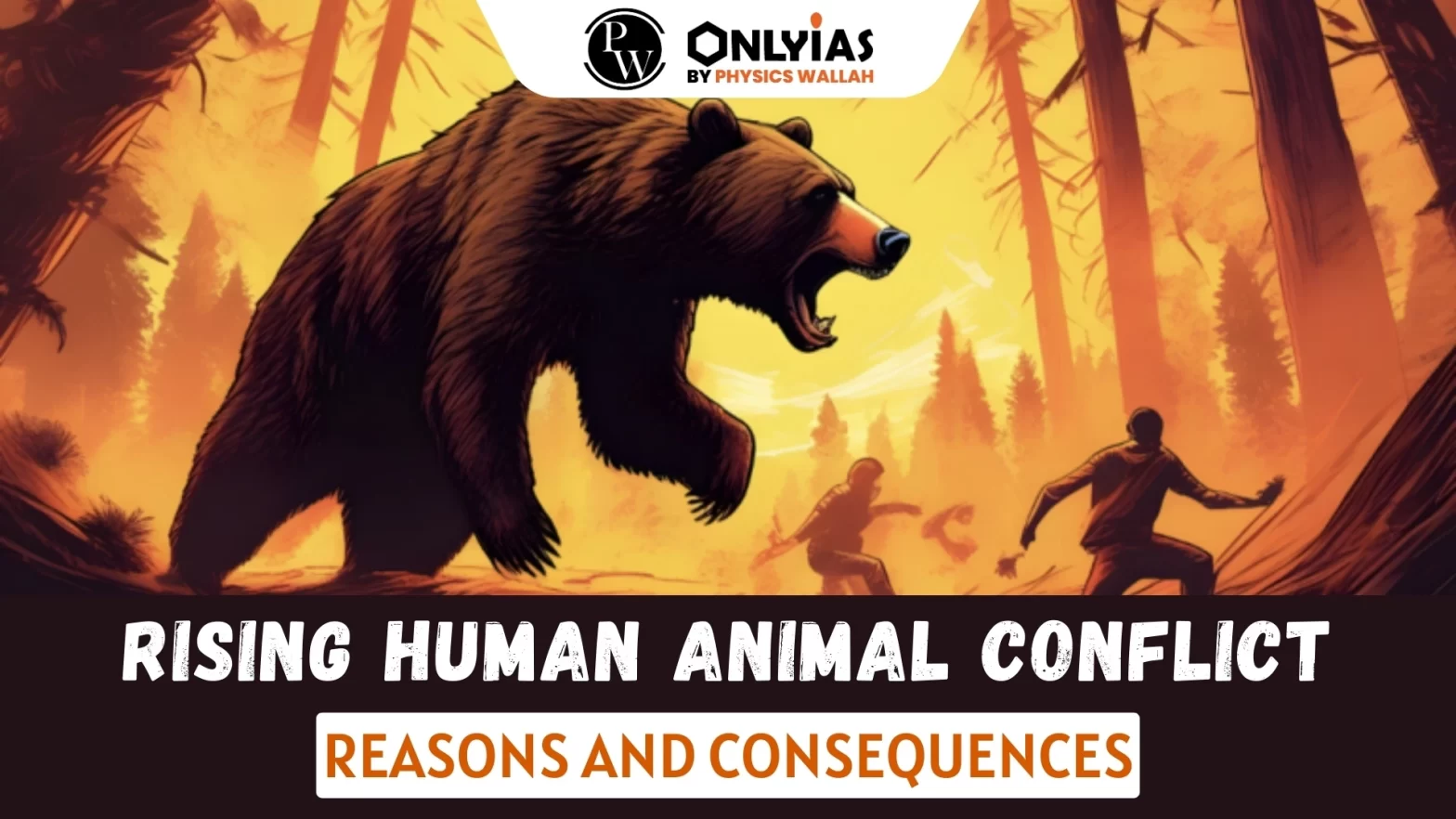Context: This article is based on an Editorial “Escalating tiger-human conflict haunts Karnataka’s Mysuru, Chamarajanagar districts. Is big cat population spike to blame?” which was published in the Down To Earth. The Mysuru and Chamarajanagar districts in Karnataka reported five deaths in the last three months due to an increase in the number of tigers.
| Relevancy for Prelims: Government Initiatives to combat Human-Animal Conflict.
Relevancy for Mains: Challenges of Human Animal Conflict, steps taken by the Government and Way Forward. |
Rising Human Animal Conflict
- According to forest officials, the death is on account of fighting among tigers.
- The recent increase in tiger and leopard populations, as well as the shrinking of forest area, has caused conflict in the region.
What is Human Animal Conflict?
- As per the report, titled, ‘A future for all – the need for human-wildlife coexistence’, human animal conflict is when encounters between humans and wildlife lead to negative results, such as loss of property, livelihoods, and even life resulting in suffering for both people and wildlife.
Human Animal Conflict: Reasons
- Habitat loss, Degradation and Fragmentation: Species habitat loss, degradation and fragmentation are interconnected with population growth and land use.
- Disturbance to Food Chain: As prey is not enough for predators (tigers), it leads them out from forests in search of food.
- Land Use Changes: Expansion of urbanization and the expansion of livestock grazing drive species to shift their territorial and movement behavior.
- Adverse Climatic Events: During calamities, animals come out from forests in search of water, food or shelter and result in human animal conflicts.
- Accidental Deaths: Due to developmental activities and enhancement of infrastructure, such as passing of railway lines from the forests and electric wires. It sometimes leads to accidental death of animals.
Human Animal Conflict: Consequences
- Growing antipathy towards Animals: It is leading to engendering man-animal conflicts, revenge killing of carnivore animals and poaching.
- There is a need to evolve a coexistence mechanism.
- Impact on Social Dynamics: The HWC has severe psychological impacts on people facing crop losses, damages to property and loss of lives.
Government Interventions to Address Human Animal Conflict
- Advisory for management of Human-Animal Conflict: The Standing Committee of National Board for Wildlife (NBWL) approved the advisory for management of HWC in India. It deals with the following significant points:
- Empowering Gram Panchayat
- Augmenting fodder and water sources
- Crop Compensation under Pradhan Mantri Fasal Bima Yojana
- Interim Relief within 24 hours
- Early Warning Systems and Creation of Barriers
- Identification of Hotspots
- Toll free Hotline Numbers
- National Wildlife Action Plan 2017-2031 (NWAP): It has a dedicated chapter focused on managing HWC. It deals with the following significant points:
- Scientific Management of Wildlife Population
- Sustainable Land Use Practices
- Education and Awareness Programmes
- Encourage Community Participation
- As they play an important role in animal protection such as Baigas in Kanha National Park, Bishnoi Community in Rajasthan, etc.
- Wildlife (Protection) Act of India (WPA), 1972: The WPA, 1972 provides the legal framework for the protection of various species of wild animals and plants.
- Declaration of Vermin Animal: It also deals with the declaration of certain wild animals to be vermin for any area and for such a period as may be specified if the number of such animals are very large and a threat to humans. Examples: Wild boar and Nilgai in Bihar and Monkeys in Himachal Pradesh.
- Mass Sterilization Programmes can be used to control their Population Growth.
- The National Green Tribunal has asked the Ministry of Environment, Forest and Climate Change to consider declaring all elephant corridors in the country as eco-sensitive zones.
The Path Ahead to Prevent Human Animal Conflict
- Need to identify the Key Source of Conflict
- Need to focus on Community centric Management
- Need to follow Landscape Management Technique: Use resources, process and stakeholders in an integrated manner for welfare of all and protect interest of everyone
- Need to Raise and Spread more Awareness
- Use Latest Technology for monitoring, corridor management and enhancement of frontline capacity.
- Need of Well-planned Infrastructure Development to reduce this human-animal conflict ratio.
Conclusion:
The escalating human animal conflict in Karnataka’s Mysuru and Chamarajanagar districts highlights the urgent need for holistic strategies, including community involvement, and government initiatives to address habitat loss, and other factors contributing to the rising conflicts.
Continue Reading: Rising Human Wildlife Conflict (Human-Animal Conflict)
Also Read: Gajraj System: Indian Railways to Install AI-Based Elephant Protection Software
![]() 21 Dec 2023
21 Dec 2023

